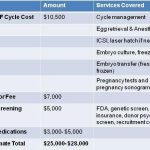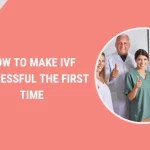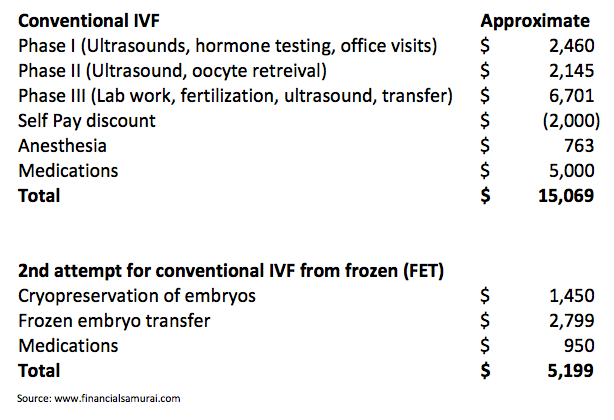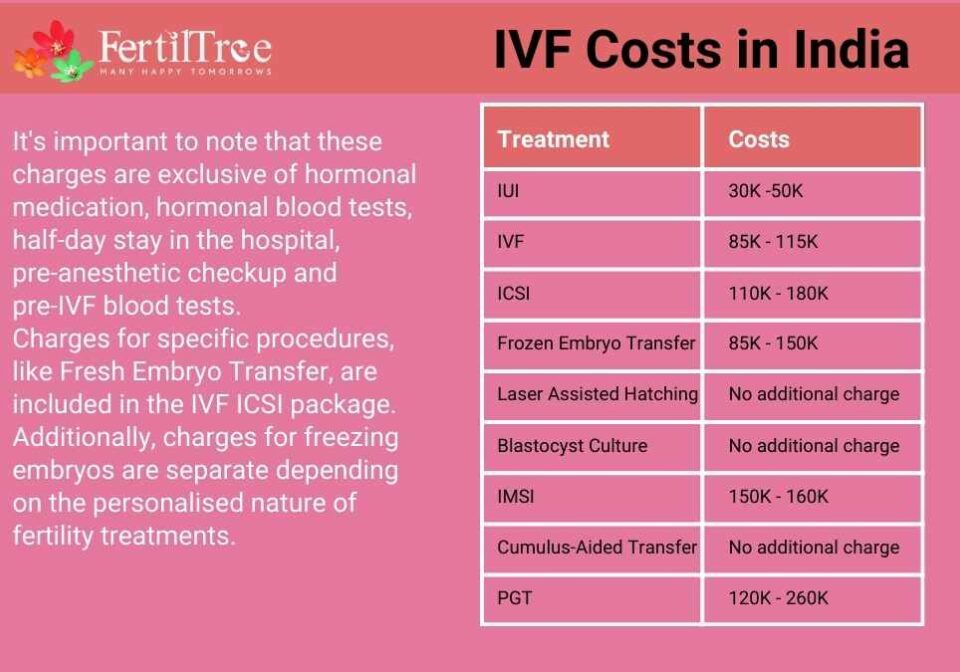
How Much Does IVF with an Egg Donor Cost?
April 11, 2025
How to Make IVF Successful the First Time
April 11, 2025How Much Does an IVF Procedure Cost? Your Complete Guide to Understanding the Price Tag

How Much Does an IVF Procedure Cost? Your Complete Guide to Understanding the Price Tag
Starting a family can feel like a dream come true, but for many, the road to parenthood isn’t as simple as they’d hoped. If you’re considering in vitro fertilization (IVF), you’re probably wondering about the cost—and trust me, you’re not alone. IVF is a powerful tool to help people conceive, but its price can seem overwhelming at first glance. Don’t worry, though—I’m here to break it all down for you, step by step, with real numbers, practical tips, and some fresh insights you won’t find everywhere else.
In this guide, we’ll explore what drives IVF costs, how prices vary depending on where you live or what you need, and how to make it work for your budget. We’ll also dive into some lesser-known factors—like emotional expenses and new research—that could change how you approach this journey. Ready? Let’s get started.
What Is IVF, and Why Does It Cost So Much?
IVF stands for in vitro fertilization, a process where doctors take an egg, fertilize it with sperm in a lab, and then place the resulting embryo into the uterus. It’s like giving nature a little high-tech nudge. But if you’ve heard anything about IVF, you know it’s not cheap. So, why does it carry such a hefty price tag?
The answer lies in the complexity. IVF isn’t just one simple procedure—it’s a series of steps, each requiring skilled professionals, advanced equipment, and sometimes pricey medications. Think of it like building a custom car: you’ve got engineers (doctors), specialized parts (lab tools), and fuel (fertility drugs) all working together. Here’s a quick rundown of what’s involved:
- Ovarian Stimulation: Medications help your ovaries produce multiple eggs—sometimes costing $3,000 to $5,000 per cycle.
- Egg Retrieval: A minor surgery to collect those eggs, often around $1,500 to $2,000.
- Fertilization and Embryo Growth: Lab work to create and nurture embryos, which can add $1,000 or more.
- Embryo Transfer: Placing the embryo in the uterus, typically $1,000 to $2,000.
- Extras: Tests, monitoring, and freezing embryos for later use—all of which pile on additional fees.
On average, one IVF cycle in the U.S. runs between $12,000 and $15,000, not including medications or add-ons. That’s a big range, right? And it can climb higher depending on your situation. Let’s unpack why that happens.
Breaking Down the Numbers: What’s the Real Cost of IVF?
If you’re picturing a single, flat fee for IVF, think again. Costs vary wildly based on location, clinic, and your unique needs. To give you a clearer picture, here’s what you might expect:
The Base Price
Most clinics quote a base cost for a single IVF cycle—usually $10,000 to $15,000. This covers the essentials like egg retrieval, lab work, and embryo transfer. But here’s the catch: that’s just the starting point. A 2023 study from the American Society for Reproductive Medicine (ASRM) found that only about 40% of patients pay this “sticker price” because of extra steps or complications.
Medications: The Hidden Expense
Fertility drugs are a game-changer for IVF success, but they’re also a budget-buster. Depending on your body’s response, you could spend $3,000 to $7,000 per cycle on drugs like follicle-stimulating hormone (FSH) or gonadotropins. Some folks need less, others more—it’s a roll of the dice.
Add-Ons That Add Up
Want to boost your odds? Many clinics offer extras like:
- Preimplantation Genetic Testing (PGT): Screens embryos for genetic issues—$2,000 to $5,000.
- Frozen Embryo Transfer (FET): Using stored embryos later—$3,000 to $5,000.
- ICSI (Intracytoplasmic Sperm Injection): Injecting sperm directly into the egg—$1,000 to $2,000.
These can push your total closer to $20,000 or more. A clinic in New York might charge $18,000 for a cycle with ICSI, while one in Texas quotes $14,000 for the same package.
Location Matters
Where you live plays a huge role. IVF in big cities like Los Angeles or Chicago often costs 20-30% more than in rural areas due to higher demand and overhead. For example:
- California: $15,000–$20,000 per cycle.
- Midwest (e.g., Ohio): $12,000–$16,000.
- Internationally: Places like Mexico or India can drop to $5,000–$8,000, tempting some to travel.
Insurance: A Wild Card
Here’s where it gets tricky—only 19 U.S. states require insurance to cover some infertility treatments as of 2025, and even then, IVF isn’t always included. If you’re lucky, insurance might cover $5,000–$10,000, but most folks pay out of pocket. Check your policy, because this could save you thousands.
Quick Cost Snapshot
| Item | Typical Cost Range |
|---|---|
| Base IVF Cycle | $10,000–$15,000 |
| Medications | $3,000–$7,000 |
| PGT | $2,000–$5,000 |
| ICSI | $1,000–$2,000 |
| Frozen Transfer | $3,000–$5,000 |
How Many Cycles Will You Need?
Here’s a tough truth: IVF doesn’t always work the first time. Success rates depend on age, health, and luck. According to the CDC’s 2021 data (the latest comprehensive stats), live birth rates per cycle are:
- Under 35: 50.8%.
- 35–37: 40.5%.
- Over 40: 7.9%.
So, if you’re over 40, you might need three or more cycles, pushing your total cost to $40,000 or higher. Younger folks might get lucky on round one, keeping it closer to $15,000. The big question: how do you plan for that?
A Real-Life Example
Take Sarah, a 32-year-old from Florida. Her first cycle, including meds and PGT, cost $18,000—no baby. Her second try, using frozen embryos, was $5,000—success! Total: $23,000. Compare that to Mark, 41, in California: three cycles at $20,000 each, plus $10,000 in extras, totaling $70,000 before his twins arrived. Your story will be unique, but these give you a sense of the range.
Interactive Quiz: What Might IVF Cost You?
Let’s make this personal. Answer these quick questions to estimate your potential IVF bill:
- How old are you?
- Under 35 (1 cycle likely): +$15,000
- 35–40 (1–2 cycles): +$20,000–$30,000
- Over 40 (2–3 cycles): +$30,000–$50,000
- Do you need extras like ICSI or PGT?
- Yes: +$3,000–$5,000
- No: $0
- Does your insurance cover anything?
- Yes: -$5,000
- No: $0
Add it up—what’s your rough total? Drop your guess in the comments below, and I’ll chime in with feedback!
The Emotional Price Tag: Beyond Dollars
Money isn’t the only cost with IVF. The emotional toll can be just as heavy, and it’s something not enough people talk about. Picture this: weeks of hormone shots, endless appointments, and the rollercoaster of hope and disappointment if it doesn’t work. A 2024 study from the Journal of Fertility and Sterility found that 65% of IVF patients report moderate to severe stress during treatment—higher than previously thought.
Coping Tips
- ✔️ Build a Support Crew: Friends, family, or a support group can lighten the load. Resolve.org offers free virtual IVF groups—check them out.
- ❌ Don’t Go It Alone: Bottling up feelings can make it worse. Talk to someone.
- ✔️ Set Small Wins: Celebrate each step—egg retrieval, embryo creation—like mini victories.
Clinics rarely factor this into their quotes, but it’s real. Budgeting time and energy matters as much as cash.

New Research: What’s Changing IVF Costs in 2025?
IVF isn’t static—science keeps pushing it forward, and that affects prices. Here are three game-changers from recent studies that could shift your costs:
1. AI-Powered Embryo Selection
A 2024 trial from Stanford showed AI can pick the healthiest embryos with 85% accuracy—better than human embryologists (75%). Clinics adopting this might charge $1,000 extra upfront, but it could cut the number of cycles you need, saving $10,000+ long-term.
2. Mini-IVF Gains Traction
Mini-IVF uses lower drug doses, slashing medication costs to $500–$1,500 per cycle. Success rates are slightly lower (35% vs. 50% for under-35s), but the total price drops to $7,000–$10,000. It’s a budget-friendly option gaining buzz on X and fertility forums.
3. Insurance Mandates Growing
Posts on X in early 2025 highlight California’s new law forcing insurers to cover IVF. If more states follow, your out-of-pocket cost could drop by half. Keep an eye on local legislation—it’s a slow shift, but a big one.
How to Save Money on IVF Without Cutting Corners
Staring at these numbers might feel daunting, but you’ve got options to make IVF more affordable. Here’s how to stretch your dollars:
Shop Around
Clinics vary in price, even in the same city. Call three places and ask for itemized quotes—some bundle services cheaper. Online reviews on platforms like FertilityIQ can point you to quality spots that don’t break the bank.
Financing and Grants
- Loans: Companies like Prosper offer IVF loans with 6–12% interest—better than maxing out a credit card.
- Grants: Groups like Baby Quest Foundation give $2,000–$16,000 to qualifying families. Apply early—funds run out fast.
Tax Breaks
Did you know IVF expenses can be tax-deductible? The IRS lets you write off medical costs over 7.5% of your income. A $20,000 cycle might save you $3,000 come tax time—talk to an accountant.
Travel Smart
IVF abroad can halve your bill—think $6,000 in Spain vs. $15,000 in the U.S. Factor in travel and lodging, though; it’s not always a steal. Research clinics with HFEA or CDC accreditation for safety.
Savings Checklist
- ✔️ Compare clinic prices locally and beyond.
- ❌ Avoid super-cheap deals with no track record—safety first.
- ✔️ Apply for grants ASAP—deadlines sneak up.
- ❌ Don’t skip insurance research; even partial coverage helps.

Poll: What’s Your Biggest IVF Concern?
Let’s hear from you! Pick one:
- A) The cost is too high.
- B) I’m worried it won’t work.
- C) I don’t know where to start.
Vote in the comments—I’ll tally the results next week!
The Ripple Effect: What IVF Costs Society
Here’s something you won’t find in most articles: IVF’s price isn’t just personal—it impacts everyone. A 2025 Trump administration report estimated that each IVF baby adds $1 million in economic value over their lifetime (taxes, work, etc.). If IVF costs $20,000 but creates that kind of return, should society pitch in more? Some argue yes—subsidizing it could boost birth rates and economies. Others say it’s unfair to raise insurance premiums for all, as X posts from 2024 suggest.
What do you think—should IVF be a public investment? It’s a debate worth having.
Planning Your IVF Budget: A Step-by-Step Guide
Ready to crunch some numbers? Here’s a practical plan to figure out your IVF costs:
- Assess Your Needs
Chat with a fertility doc (many offer free consults) to see if you need extras like ICSI or multiple cycles based on your age and health. - Get Quotes
Contact two local clinics and one out-of-state or international option. Ask for a full breakdown—base fee, meds, add-ons. - Check Insurance
Call your provider with policy in hand. Ask: “Does this cover IVF, diagnostics, or meds?” Write down the answer. - Estimate Cycles
Use success rate stats (e.g., CDC data) for your age group. Plan for 1–3 cycles to be safe. - Add a Buffer
Tack on 10–20% for surprises—unexpected tests or travel delays happen.
Sample Budget (Age 35, No Insurance)
- Base cycle: $14,000
- Meds: $4,000
- PGT: $3,000
- 2nd cycle (frozen): $5,000
- Buffer (15%): $3,900
- Total: $29,900
Tweak this for your scenario—it’s a starting point, not a rule.
The Future of IVF Costs: What’s Next?
Peeking ahead, IVF prices might shift in cool ways. Clinics are testing “IVF lite” packages—streamlined cycles for $8,000–$10,000—aimed at younger patients with milder issues. Plus, lab-grown eggs (still experimental in 2025) could ditch pricey meds entirely one day. A Nature study from 2024 predicts this tech might be ready by 2030, potentially cutting costs to $5,000 per cycle.
For now, though, focus on today’s options—and don’t lose hope. IVF’s expensive, but it’s also evolving fast.

